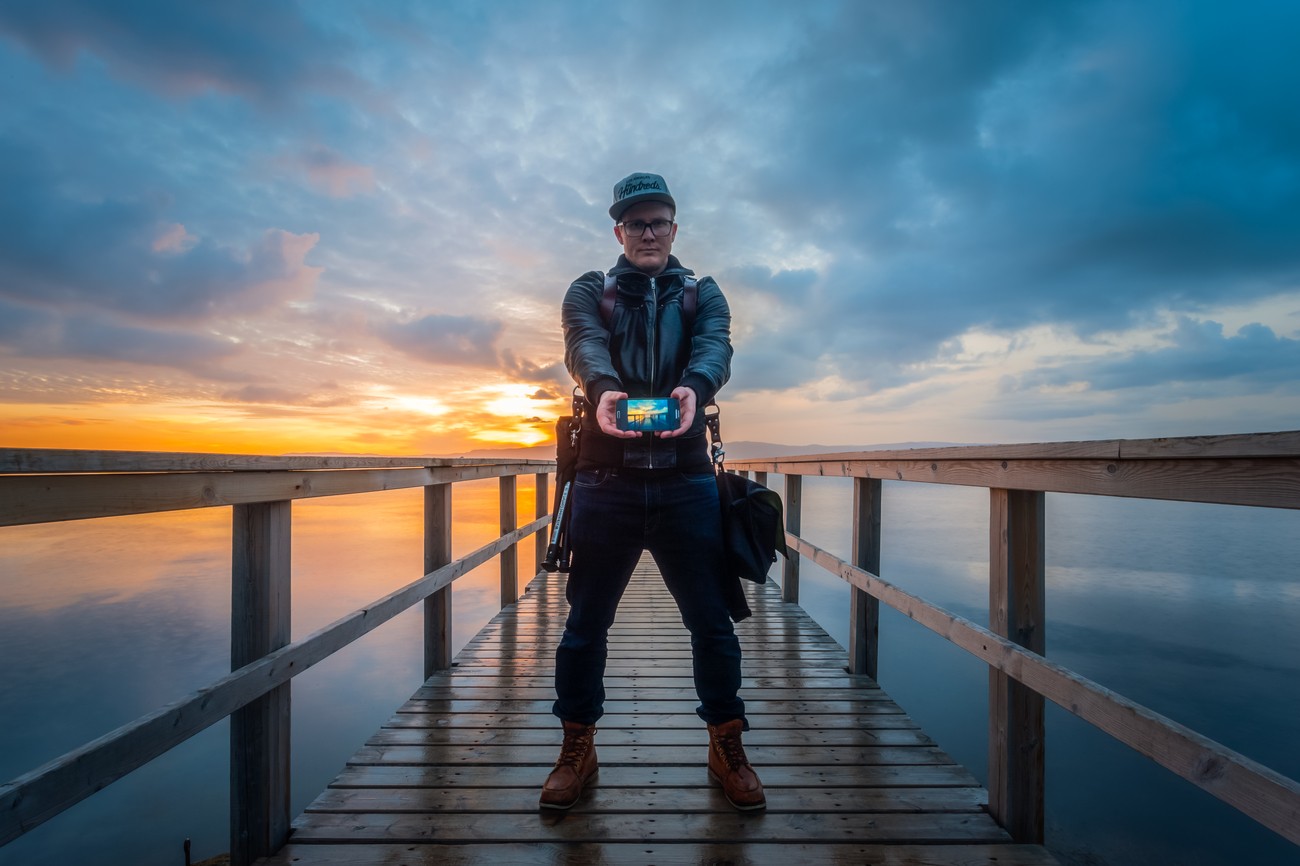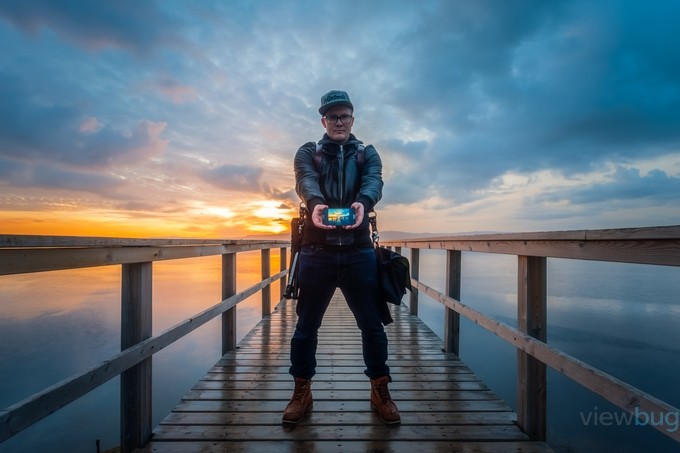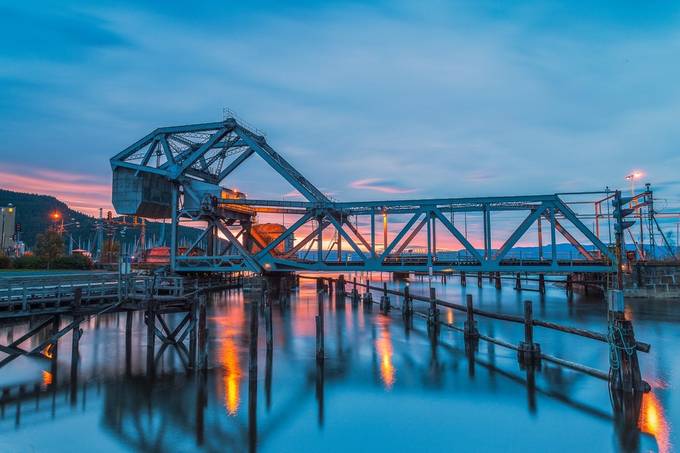VIEWBUG community member and awesome photographer KnutAageDahl shares 3 tips on how to photograph reflections and some insights on the process behind his photos.
Reflections are beautiful in landscapes to create balance: draw the attention towards your main subject or be in the foreground, like a pond that reflects the dramatic sky in the foreground and a mountain in the background. It is a great tool to enhance the main subject, like the Aurora Borealis reflecting in the sea. It is a kind of tease to your eyes and drags them into the photo.
Early morning is usually the best time to photograph reflections. For other types of photos, you can use mirrors to include some parts of the scene that otherwise is not possible or to reflect light directly to your subject. Here is an example: have someone stand at the pond and take a photo including their reflection. Have your main subject walk away and leave his shoes behind. Then stitch the shoes in photoshop to make it look as if only the shoes reflect in the water. There are rules created to guide you, not to be an obstacle but sometimes you need to ignore the rules to get the image you imagine or that you want to create.
For moving water I recommend using an ND filter, reducing the texture, and smoothening the water out to make a mirror out of it, also, for an easier shot take pictures at lakes or the sea when there is little or no movement at all.
KnutAageDahl shares the specifics behind this creative and gorgeous photo:
What are you trying to capture?
I try to capture the mood of these old docks- old wise and experienced docks. I wanted to give motion with long exposure as if they have stood there for a long time with a balanced composition to bring out the feelings of stability and continuity.
How do you know if it’s visually interesting?
I know it is by looking at the depth of the picture: color, contrast, and composition. Also, basic techniques such as leading lines, motion, and rules of thirds can also be used. As a final check, I look at the photo with my eyes partly closed and see a blurry layout and if that looks good, I know the composition is great. I also check for items I don't want in the frame and those I want to include.
Are you thinking about perspective?
Yes. It all depends on what you want to enhance, what you want the viewer to focus on, and what is your story. I wanted my docks to stand out from the reflections and colors, and I used other parts to enhance just that. The foreground leads the eye, and the drawn-out sky does the same and creates some motion.
Are you using a tripod?
I almost always use a tripod when shooting landscapes, mostly due to the fact that I often use my LEE BigStopper and partly because I love the look on iso 50 and iso 100. I have learned that If I shoot on iso 50 and avoid blowing out highlights, I can open up more in the shadows. If I use iso 100 I can save more of the highlights.
What time of the day was it shot?
This was around 16:00 o'clock. But the partly overcast sky creates an interesting look. Like the sky used a softbox.
What aperture settings are you using?
I use all different apertures when taking landscape pictures. I know my lens well, but mostly I take photos from f/7.1 - f/14. I've found that it is the sharpest at 7.1 and controls CA best at f/14. f/22 is for when I want more exposure time or when I'm lazy and don't bother checking the focus. I know what it needs to be to create a great DOF and focus on f/22 by looking at the lens and not using live view.
How are you choosing to stay close or far from the subject?
It depends on how I want to compress the subject. If got room to move and what I want to enhance, I divide the picture into 3 categories: foreground, mid-ground, and background. My main subject was in the mid-ground, so I had to make the mid-ground stand out. Since I used a wide-angle lens, I had to move out from the foreground so I wouldn't make the rocks too big and take away the attention from the docks.
What is your mindset when it comes to POV?
There are different ways to give a subject some type of character. The way you compose can give your subject different types of emotion, the low angle facing upwards can make it powerful, and the balanced POV can make it look strong or harmonic, these different tools can work together to create a story. These docks are old, so I wanted a balanced and harmonic look, you can see that the picture is composed 50/50. And the lines are more or less straight.
How do you accomplish the perspective on this photo?
I moved out of the rocks. These are there only to make your eyes wander a little bit and to create depth as a foreground. I had to choose the wide-angle lens to get enough docks into the picture, so I moved out from the rocks to make them small enough, so they don't steal attention from my main subject. I composed it equally with the foreground (rocks) mid-ground (docks) background (sky etc). I moved up from the ground to avoid bad lines on the buildings and corrected minor issues with lines in photoshop.
Are you thinking of the rule of thirds/how?
I'm always thinking of the rules of thirds and other basics in photography. But I don't see it as rules, I see it as guidelines and tools that can be used but sometimes you need to throw them away to achieve the photo you have envisioned. When composing, I try to read the scene and use the rules of thirds to enhance either foreground or background by giving it more space. It all depends on what I want to make the viewer focus on. If the middle ground is more pleasing I use 50/50.
Are you thinking of symmetry?
Symmetry can be used as a tool to balance the photo. Sometimes you want to bring it out of balance to enhance emotions. If you have a tree on the right side, mid-frame, you can use some lines or something else on the left side in the foreground to draw your eyes to the right side. These lines will balance out the tree that is placed on the right. This will create some harmony for the photo. We all look for symmetry as a factor of beauty when we look at others' faces, so I guess these rules also apply in photography.
Are you thinking of shadows?
Shadows are important. They play a big role in creating depth, and color and bringing out highlighted parts of the scene. You have soft or hard shades, I prefer soft shades and harder shading on parts that stand out to enhance, and create more drama and attention. Too many hard shades can be confusing, if you look at animations, they most often draw the background with low contrast and the main subject with high contrast to enhance the main subject.
How are you using the reflections?
Reflections are used to draw the eye towards the docks and enhance these. Giving it a view not many see so clearly with the naked eye as the river is in motion. It gives the picture a surreal and surprise factor that wows the viewer.
Are you thinking of a unique angle?
Sometimes, these docks have been photographed many times. A different angle is hard when you are limited in space, I tried to use other things to stand out, like long exposure, time of day, editing, balanced composition, and depth through contrast, and colors.
Did you do any post-processing? if so, what?
I used photoshop. I have learned by trial and error, buying videos from artists I admire, using the skills I liked from them, and creating my own style. I can't tell you the techniques of artists like Tony Kuyper, Ryan Dyar and Serge Ramelli, but I highly recommend you to have a look at these videos. They are worth the investment much more than spending cash on new gear.
The work I did on this photo was to lower highlights, open shadows, find a white balance that captures the mood of the picture the way I saw it, increased the contrast in the mid-tones, and color enhancing using the tools of those 3 artists I just mentioned (and many others that I've picked up in magazines and discovered myself).










